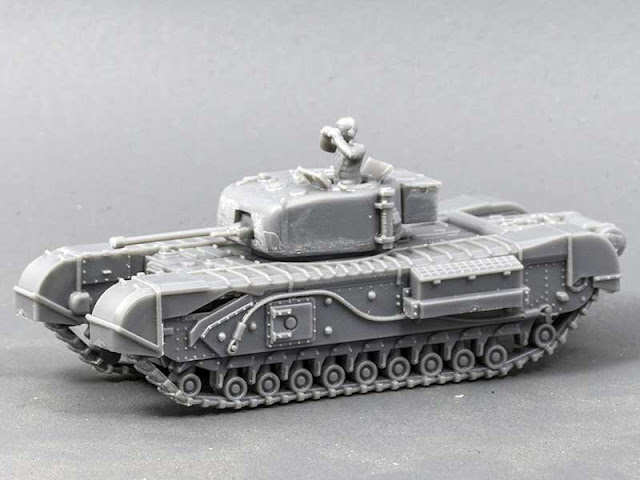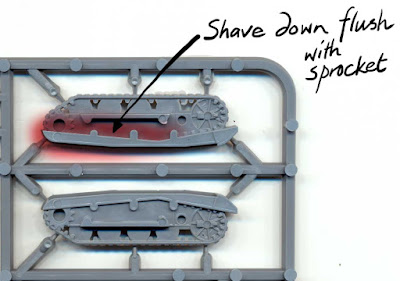 |
| Click on the pictures for larger versions |
The 15mm (1/100) 25 pounder gun-howitzer box set is a pretty useful and flexible purchase for anyone fielding a WWII force. The 25 pounder served, in one form or another, throughout WWII and after, and in every theatre of operations.
This set offers options to build an early or late model 25 pounder on either a Mk.I/II or Mk.IV carriage, or an 18/25 pounder on the Mk.I/II carriage, or the 17 pounder Pheasant anti-tank gun on the Mk.IV. The limber is included on the guns' sprue, while the CMP Quad tow vehicle is on a separate sprue, and can be built with or without a canvas top cover. Mine is intended for North Africa, so I've built it without. (Note: PSC also offer a set with the Morris Quad.)
There are crew figures supplied suitable for the African or European theatres, and they're reasonably well sculpted, if a little soft of detail. All of the helmeted ETO figures have hessian scraps in their helmet nets, so if you want an early-war crew in battledress, you'll have to do some head-swaps, or sand down the clutter on the helmet covers.
The Guns and Limber
There are four gun/crew sprues in the box.There are sufficient parts on each sprue to build one gun and a limber, or two guns, one on a Mk.I/II carriage and the other on the Mk.IV.
Or, you can do as I did, and cheat: I used InstaMold (like Blue Stuff) to make a two-sided press-mould of two of the wheels so that I could do both guns
and a limber. I cast the new wheels in 5-minute epoxy.
To be honest, it seems a little parsimonious of PSC not to have just included a couple more wheels on the sprue. There's room enough for them.
The guns go together pretty easily, though I got some parts the wrong way around at first and had to re-do them. The instruction sheets aren't some of PSC's worst by any means, but they could definitely still be clearer.
As you can see from the photo, I built an early model 25pdr and a Pheasant. There's only one hanger supplied (the connecting frame between the gun carriage and the turntable), so I didn't bother with it on the Pheasant. It would be a fairly simple thing to scratch-build, but I didn't think the effort worth while for my purposes. And besides, I vaguely recall reading that it tended to be left uncoupled on the Pheasant in any case, as the massive recoil of the 17pdr had a tendency to rip it off!
The limber, like the guns, went together very easily. Regrettably, there's no option to model it with the doors open, as they would be in action, and it's also missing the canvas cover that shrouded the connection between the limber and towing-pole — that will have to be added from putty or whatever if you want it present.
The Quad
For the most part, the quad assembled as straightforwardly as everything else, but with one exception: the roof.
The locating rim around the edge of the rear portion of the roof piece does not fit with the sides and rear. To get the roof to sit flush on the sides, you have two options: either shave down the inside top edges of the sides and rear pieces, or shave down the roof piece itself. I chose the former as the easier option. The plastic is fairly soft, so it didn't take all that long, but it was an irritation nevertheless.
I built mine as the open-topped version. In the desert, you pretty much had to choose between letting the air in or trying to keep the dust out, and since the dust got everywhere in any case, the choice was generally pretty easy to make.
Unfortunately, there's no piece supplied for the rolled-up top cover tarpaulin, so that's another piece that will have to be scratch-built or sourced elsewhere.
Summary
This set is not without its faults, but they are very minor. The fitting of the quad roof might cause problems for someone quite new to plastic modelling, but not to anyone with any experience.
The faults, such as they are, are far outweighed in my view by the flexibility and usefulness of the options offered. As such, it's good value.

















































